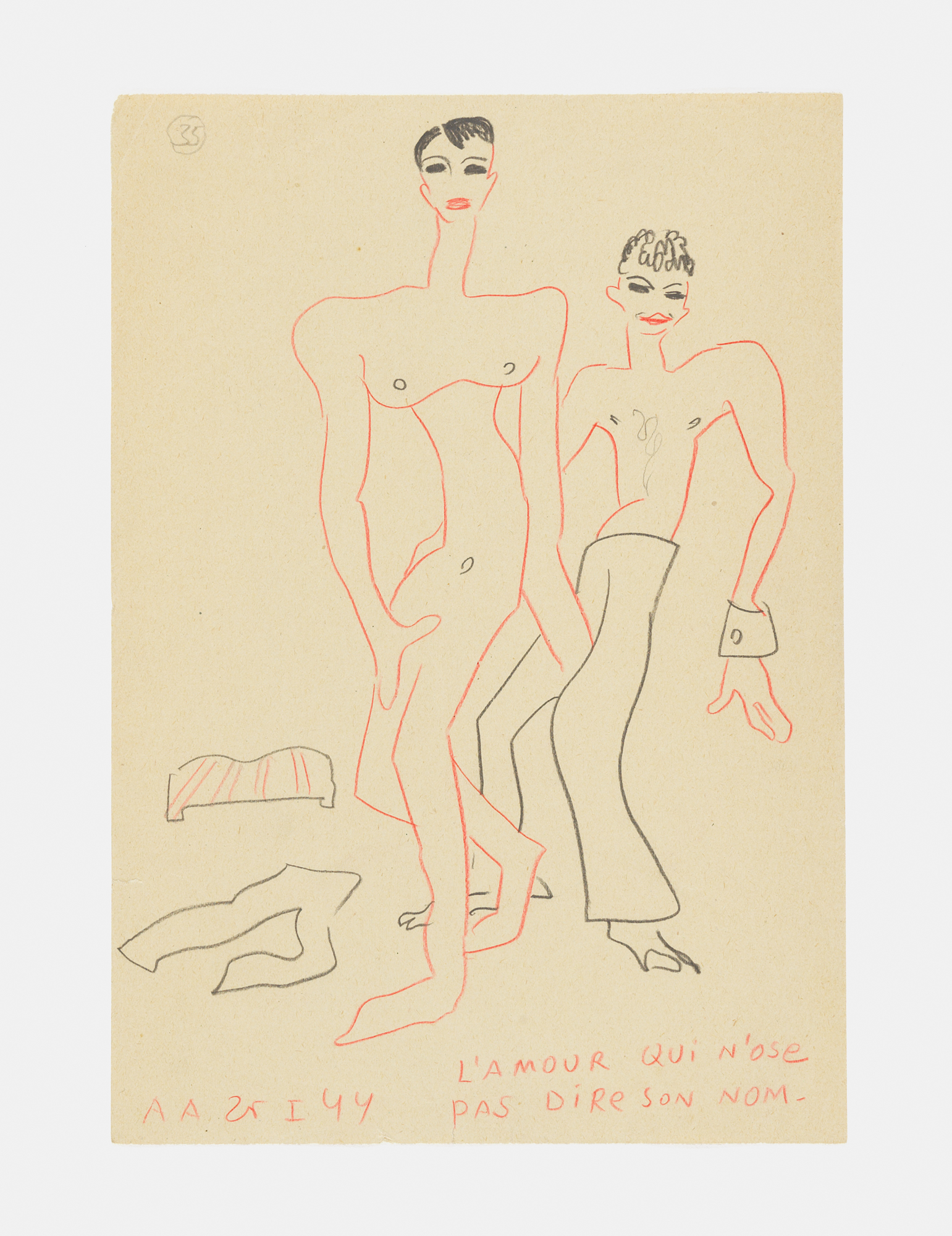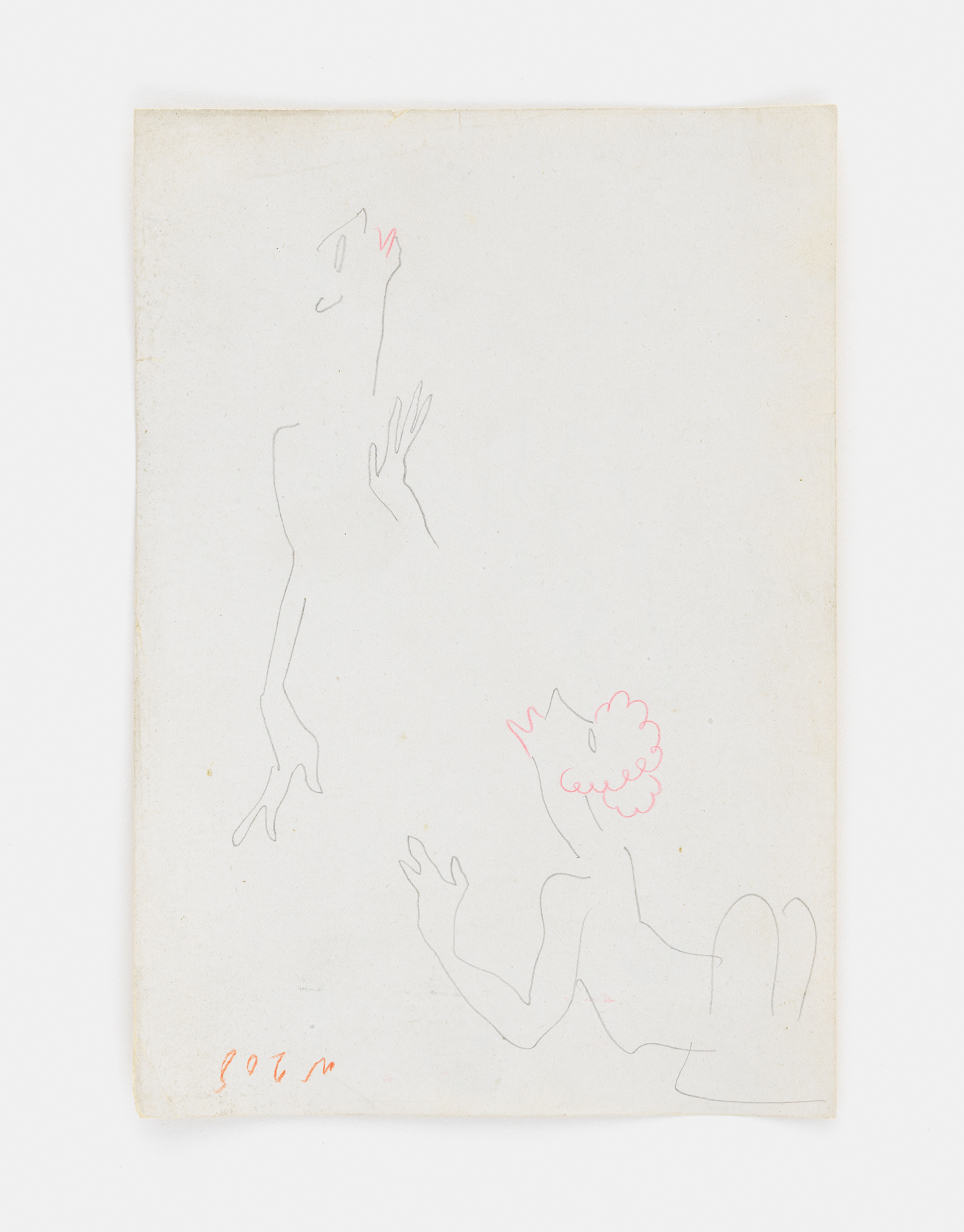

<
>
Sergei Eisenstein
Untitled [L’amour qui n’ose pas dire son nom]
1944
Colored pencil on paper (both sides)
8 3/8 x 5 7/8 in (21.1 x 14.8 cm)
Image courtesy Alexander Gray Associates, New York
This work on paper features two men in a sexual act with the phrase “L’amour qui n’ose pas dire son nom” [“The love that dare not speak its name”] written on the front. The phrase is the title of a François Porché book published in 1927 in response to André Gide’s Corydon (1924) as well as the French translation of the famous last line of Lord Alfred Douglas’ poem mentioned at Oscar Wilde’s indecency trial. The verso of the work also contains an erotic drawing. Eisenstein produced about 5,000 homoerotic drawings between 1931-1948, spanning the period of his travels in Mexico and the United States in the 1930s until his death in Moscow in 1948.
Sergei Eisenstein (1898-1948) was born in Riga, Latvia. As a young man he helped manage an experimental theater and a circus in Moscow while studying civil engineering and architecture. During the Russian Civil War he organized theatrical performances for the Red Army and also painted and designed the scenery. In 1920 he joined the first workers’ theater, the Proletcult, where he served as art director and producer of plays. He left the theater in 1924 and started making films.
Eisenstein is best known for his pioneering film work, such as the The Battleship Potemkin (1925), but drawings occupied a significant part of his artistic practice.
Many of his films are subtly subversive in his refusal to broadly prioritize propagandistic Soviet Realism over experimentation with camera techniques. In his “sex drawings,” Eisenstein engages in pointed institutional critiques, occasionally through the inclusion of Christian iconography and clergy members performing sacrilegious sexual acts. He also illustrates figures engaged in intercourse in public spaces, including leaning out a window and on film sets. Through his exploration of this content, Eisenstein constructs succinct and transgressive visual stories in a medium that was intentionally less public-facing than his films….
This collection of drawings [from which this work comes] has a rich history. When departing Mexico, Eisenstein was stopped, questioned, and his luggage searched at the United States border where the drawings were nearly confiscated for their incendiary nature. Upon his return to Moscow at the height of Stalin’s rule, he kept the explicit images hidden until his death in 1948. His widow, Pera Atasheva, donated his archive, with the exception of most of the more graphic sex drawings, to the Russian State Archives of Literature and Art in Moscow (RGALI). Atasheva entrusted the erotic drawings to Eisenstein’s close friend and collaborator, the famous Soviet cinematographer Andrei Moskvin, who protected the director’s reputation by keeping the drawings hidden. After Moskvin’s death in 1961, his widow safeguarded the drawings. In the late 1990s, her heirs sold the drawings to the family of the present owner. A quarter of the drawings were also donated to the permanent collection of the State Hermitage Museum in St. Petersburg, Russia.
Press release, “Sergei Eisenstein: Drawings 1931-1948,” 7 January – 11 February 2017
Provenance
Alexander Gray Associates
See also
Sergei Eisenstein via Wikipedia
Sergei Eisenstein Collection in the MoMA Archives
Sergei Eisenstein in the collection of the MoMA
“Sergei Eisenstein: Drawings 1931-1948,” 7 January – 11 February 2017